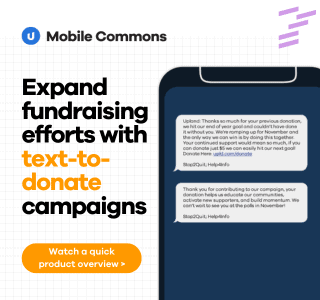For many high school seniors, paperwork like the FAFSA can seem impossible. So impossible, in fact, that students don’t fill it out—and therefore don’t successfully enroll in college. But what happens when you break the FAFSA down into smaller, manageable steps? What happens when you receive step-by-step support, say, through a text message?
New studies show that high school seniors who receive text message reminders about important FAFSA deadline are 8% more likely to enroll in college. A similar study shows that community college freshman that receive informational support for filing the FAFSA are 12 percent more likely to continue on to their sophomore year. What is it about text messaging that is so effective?
Text messaging is the key to connecting with millennials
Teenagers understand text messaging. 90% of teenagers own a cell phone, and the average teen texts 181 times per day. Sending a text message to teenagers is speaking to them in their language. Indeed, a teenager is 40 times more likely to respond to a text message than an email.
So for high school seniors who are overwhelmed by confusing paperwork, SMS may be the best way to break the fear barrier. This is especially true for first-generation college students, whose parents may not be able to offer the necessary support for the college admissions process. A text message offering step-by-step support on how to complete applications, delivered right into the teen’s pocket, can make all the difference.
How text messaging works for college admissions
A text message breaks down complicated processes like FAFSA into bite-sized chunks. This, in turn, makes big tasks seem manageable and increases the likelihood that someone will follow through with the submission. Below are three exemplary features of how text messaging can assist college-bound students during the application process:
Deadline reminders – The college admissions process involves several deadlines for different applications, and students can often get overwhelmed with keeping track of all of them. A text message reminder can help teens stay on top of their paperwork and ensure that nothing slips through the cracks. Admissions counselors can also offer to set up appointments with students over text messages to offer additional support.
Live chat – Live SMS chat allows you to text back and forth with students and have one-on-one conversations instantaneously. With this service, teenagers can set up appointments with their counselors, ask questions about enrollment, and even receive homework help through text messaging. Studies show that schools that offer mobile features have higher admissions and retention rates than those who don’t.
Tell-a-Friend – Research indicates that people are more likely to take action when they see their peers engaged in a similar behavior. If teenagers see their friends texting about college admissions, they will be more interested in doing so as well. This is where the Upland Mobile Messaging feature ‘Tell-a-Friend’ can benefit your school and build your mobile list. Mobile users can refer their friends to useful resources by simply texting in their friend’s phone number. Once those friends agree to receive updates from your school, you can start texting them immediately!
These are just a few ways text messaging can help keep classrooms full at a time when college admissions are dropping. If you’d like to learn more about implementing a text message program at your higher education institution, please contact us.


